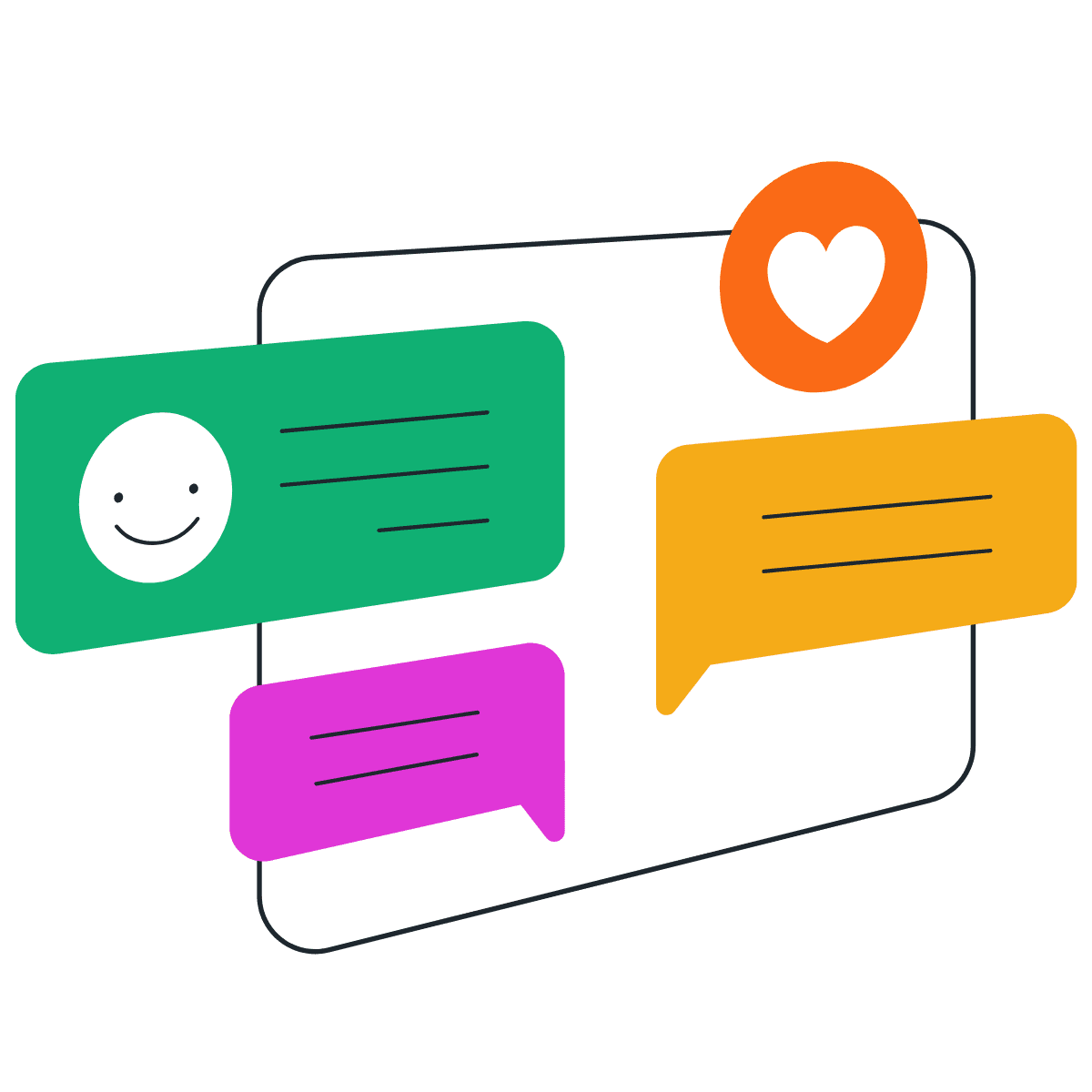How to create a content strategy plan
| TL;DR summary: A content strategy plan is a roadmap that connects business goals to audience needs by defining content topics, formats, and distribution channels. To create a plan, start by setting objectives, researching your audience, and mapping keywords into themes or clusters. Then, organize the work in a calendar, establish workflows and responsibilities, and track progress using KPIs. |
Clients expect freelancers to do more than write. They hire us to create order, deliver results, and make the content creation process more organized and efficient, even when the client isn’t sure where to start.
That’s where a content strategy plan makes all the difference. It connects business goals to audience needs, turns research into actionable insights, and provides a repeatable framework to apply across various industries, campaigns, and projects.
This guide shows you how to create a content strategy and outlines the exact steps I take to build scalable content plans for my clients. I’ll provide you with an organized method that you can adapt to fit different budgets, timelines, and team configurations. I also share a few of my go-to content planning tools and templates to help you work more efficiently.
What is a content plan?
A content plan is a strategic roadmap that outlines the content you will create, the publication schedule, the distribution channels, and how it supports specific business goals. It’s the operational part of content strategy planning, transforming big-picture objectives into a structured workflow you can execute.
In freelance work, a well-defined content strategy plan connects planning and delivery. A content plan template provides a repeatable system for creating intentional, on-brand content that advances projects and fosters client trust.
Here’s how I break the concept down:
- Content strategy plans define the ‘why’ and the ‘what’. Why are we producing this content? What topics support the client’s goals, brand positioning, or customer journey?
- Content planning is about the how and when. What’s the process for developing the content? What are the timelines, approvals, and deliverables? Who’s responsible for each step?
- Content calendars keep everything organized. They show when and where each piece of content will be published, ensuring consistency across channels and alignment with campaigns or business milestones.
Together, these elements transform scattered tasks into an organized system, so you can deliver thoughtful, measurable results without reinventing your process every time.
Why I rely on this content planning process
I don’t just use content strategy planning because it sounds good; it solves real problems I’ve encountered repeatedly.
- It achieves results. When you connect content to a client’s business objectives, such as increasing traffic, generating leads, or nurturing existing customers, it performs more effectively. You’re not guessing. You’re creating content with purpose.
- It builds trust. Clients want more than just a writer. They want someone who understands their goals and provides a well-organized solution to their problems. A content strategy plan demonstrates your expertise and helps position you as a long-term partner.
- It’s efficient. A repeatable process saves time. It reduces decision fatigue, eliminates back-and-forth, and helps you produce higher-quality work with less effort.
Key components of a basic content strategy plan
When creating a content strategy plan, I think of it as a blueprint. Each part must be carefully considered and tailored to both the client’s business and their audience. Whether you are developing your brand or assisting a client, use these foundational elements to structure and evaluate the results of your content planning strategy.
1. Business objectives
Start with the big picture: what is the client trying to achieve? Measurable goals keep content planning from becoming a scattershot effort. Swap out vague targets like “get more traffic” for specific, structured goals with clear accountability. For example, instead of saying “help the client grow their blog,” your objective might be: “Generate 100 qualified leads from organic blog content by the end of Q3.”
Whether you’re planning for a client or your own business, ask: What’s the specific result this content should produce? Is it sign-ups, demo requests, conversions, or engagement? Once you’ve defined their business objectives, choose a goal framework that helps keep the work on track. Here’s how I think about it:
SMART goals keep you focused
SMART goals are:
- Specific
- Measurable
- Achievable
- Relevant
- Time-bound
These help define what “success” actually looks like. For example:
“Increase organic blog traffic by 20% over the next 90 days.”
That’s clearer than just “get more traffic.” It provides a target to aim for, a timeline, and a clear focus for content decisions. SMART goals are ideal when you need to focus your client’s expectations or establish targets early in the planning phase.
KPIs measure the outcome
While SMART goals define what you’re aiming for, key performance indicators (KPIs) track whether you’re making progress toward that goal. Think of KPIs as your dashboard metrics.
Using the same example:
- KPI #1: Number of organic sessions to blog pages
- KPI #2: Blog-to-lead conversion rate
- KPI #3: Total qualified leads from blog content
You can set these up in Google Analytics, HubSpot, or any reporting tool your client uses. They’ll show whether your content is performing and where you may need to optimize.
OKRs align content to business goals
Objectives and key results (OKRs) are broader than SMART goals and KPIs. They’re handy when you’re working with growing teams or long-term retainers.
In this example, your OKR might be:
Objective: Position the blog as a top lead generation channel.
- Key Result 1: Publish 12 SEO-optimized articles in Q3
- Key Result 2: Generate 100 qualified leads through blog CTAs
- Key Result 3: Achieve an average time-on-page of 3 minutes or more
OKRs align your output (the content you produce) with business impact. They’re invaluable if you’re sharing responsibilities with other freelancers, collaborating with an in-house team, or planning quarterly strategy cycles.
2. Audience research
A good content strategy workflow begins with understanding audience segments. Go beyond surface-level demographics. What are the target audience’s goals, challenges, and hesitations? Use Google Analytics to see who visits your content, conduct surveys for direct feedback, or analyze competitors’ audiences for patterns.
For example, I once worked with a client in the career coaching space. Instead of assuming all their readers were job seekers, I segmented their audience into recent grads, mid-career changers, and executives. Each group needed different content formats and tones. Personas like these help you write with empathy and precision.
3. Keyword and topic strategy
Search engines play a crucial role in distributing organic content, and keyword research is essential for establishing online visibility. But with AI-generated content flooding the web, standing out now requires more than just volume or surface-level optimization.
I use tools like SEMrush, Ahrefs, and Moz Pro to map keywords with both substantial volume and clear intent. A phrase like “best CRMs for freelancers” reflects a specific use case and buying intent, which is much more helpful than something generic like “CRM software.”
AI tools like ChatGPT, Claude, or Perplexity can help with:
- Generating topic ideas based on a single seed keyword
- Identifying long-tail variations or related questions people are asking
- Drafting initial outlines to test content structure and hierarchy
However, AI outputs should only be a starting point. This is especially true because AI currently doesn’t use real data for search volume or competitive density, even though it might “think” it does. I still manually verify each topic with SEO data and compare AI suggestions to actual SERP results to assess competitiveness.
4. Channel strategy
Where will you publish content, and how will people discover it? Your content distribution strategy should prioritize the platforms where your audience already spends time. For some clients, that’s organic search and email. For others, it might be short-form video, newsletters, or community platforms like Reddit or Discord.
In one recent project for a solopreneur coach, we built a strategy that prioritized:
- Blog for SEO traffic and evergreen visibility
- LinkedIn for repurposed posts and professional engagement
- Email for nurturing and upselling leads
We avoided YouTube and Instagram. Not because they weren’t viable, but because the client simply didn’t have time (or budget) to produce content for every channel.
5. Content formats
Not all audiences consume content the same way. Select content formats that align with audience preferences and the specific funnel stages you’re targeting. Blog posts educate. Infographics simplify complex ideas. Videos explain and humanize. Webinars engage. Think about what your audience needs and where they are in their journey.
A quick example: when I created a strategy for a nutritionist, we used short videos for top-of-funnel Instagram posts, in-depth blog posts for SEO, and meal plan downloads as gated mid-funnel content. Each format had a specific goal.
6. Publishing cadence
Set a realistic schedule. Many freelancers tend to overpromise here. If your client has limited time or budget, suggest a cadence they can maintain. For example, one quality blog post per month is better than four rushed ones.
Map your cadence to the client’s business calendar. If they have product launches or seasonal spikes, coordinate content delivery accordingly. And remember to include time for feedback, editing, and revisions.
7. Performance metrics
Monitoring performance transforms your strategy from guesswork into an ongoing learning process. Choose metrics that align with your objectives. For SEO, focus on organic traffic, bounce rate, and keyword rankings. For lead generation, monitor conversion rates and form submissions to optimize results. For social media, evaluate engagement and sharing activity.
Create dashboards to track progress. I often build simple Google Sheets for clients that display how traffic and conversions change month to month. That data becomes fuel for making improvements. If something doesn’t perform as expected, you adjust it. That’s how you refine a strategy over time.
How to create a content strategy plan for your clients
Whenever I onboard a new client, my primary aim is to create a bespoke, actionable, and data-driven content strategy that drives specific business outcomes. Although each client has unique priorities and audience segments, I depend on a reliable content strategy framework that I have refined through experience. This section describes the key steps I follow when creating a strategy from scratch.
Step 1: Clarify business objectives
Before any planning begins, I need a clear understanding of what the client hopes to achieve. I start with a discovery session, either via a video call or a structured intake questionnaire. My goal is to connect strategy and content with the client’s broader marketing and business objectives.
Typical questions I ask include:
- What are your key marketing goals for the next 6 to 12 months?
- Which of your audience segments drives the most revenue or engagement?
- What content strategies have you tried in the past, and what were the results?
These conversations reveal both the client’s priorities and their pain points. For example, a SaaS client may want to reduce churn by providing more effective onboarding content. In contrast, an e-commerce client might need SEO-driven blog content to increase product visibility.
Step 2: Understand the brand voice
Consistency in voice and tone helps build trust and recognition. If the client already has brand guidelines, I review them thoroughly, which includes the tone of voice, preferred terms, visual identity, and editorial standards. If they don’t have formal documentation, I create a simple content style guide to make sure all deliverables remain on brand.
This brand guide may include:
- A description of the desired tone (e.g., authoritative, conversational, playful)
- Vocabulary and phrasing that should be used or avoided
- Grammar and formatting preferences
Understanding the brand voice also helps me brief any collaborators, such as writers or designers, so the output feels cohesive across all channels.
Step 3: Audit existing content
Before creating new content, I take stock of what’s already available. Content audits assess the client’s existing content inventory and highlight areas for optimization, repurposing, or removal. I use content auditing tools, like Google Search Console and Screaming Frog, to conduct a thorough audit.
I look for:
- High-performing pages that I can update, expand, or turn into pillar content
- Underperforming URLs that need updating, re-optimization, or retirement
- Content gaps in key topic areas or funnel stages
For example, a client might have strong top-of-funnel blog posts but lack content that supports conversion or decision making. Identifying those gaps allows me to recommend targeted content that supports the whole buyer journey.
Step 4: Conduct audience research
A content strategy is only as strong as its alignment with the target audience. I use both quantitative and qualitative methods to gather insights about the audience’s preferences, behaviors, and pain points.
My process typically includes:
- Reviewing Google Analytics data to identify demographics, traffic sources, and behavior
- Analyzing CRM or email data to segment users based on engagement and lifecycle stage
- Conducting interviews or sending surveys to gather firsthand feedback
- Reviewing competitor content to see what resonates with similar audiences
This research helps me create detailed audience personas that inform both messaging and format. For example, suppose I find that a large portion of the audience prefers video tutorials over long-form articles. In that case, I adjust the strategy to include explainer videos or embedded video summaries.
By the end of these first four steps, I have a solid foundation for building a content strategy plan that is not only connected with business objectives but also customized to the audience and grounded in real data.
Step 5: Perform keyword and topic research
Once I understand a client’s business goals and target audience, the next step is to identify the exact terms and themes that will help them appear in search results and AI overviews. This step is where strategy and SEO meet.
I typically use tools like SEMrush, Google Search Console, and Google Keyword Planner to research keywords. But even free tools like Ubersuggest or AnswerThePublic can offer valuable insights. My goal is to strike a balance among three key factors: relevance to the business, search volume, and keyword difficulty.
Here’s a simple keyword research plan you can follow:
- Start with seed keywords. If your client is a dog grooming business, seed terms might include “affordable dog groomer,” “how to groom a dog,” or “dog grooming tips.”
- Find long-tail variations. These are more specific and often easier to rank for in search engines or AI platforms. For instance, “how to find a groomer for show dogs” might be a great long-tail keyword.
- Analyze user intent. Take a look at what Google surfaces for a given keyword. Are the top results blogs, tools, or product pages? The search engine results page, or SERP, shows you what users expect.
- Check competitors. See what terms they rank for. You can often find content gaps this way.
Once, while working as a virtual assistant, I discovered that although my client wanted to rank for “virtual assistant services,” a more effective angle was “virtual assistant for real estate agents.” That long-tail keyword had less competition and directly addressed a niche they were targeting.
Step 6: Create pillars and clusters
Once you have your list of target keywords and content themes, group them into topic clusters that support central pillars. Content pillars and nested subpages improve SEO and help readers navigate your site more intuitively.
Here’s how to structure a pillar and cluster page framework:
- Pillar page: Covers a broad topic thoroughly (e.g., “The Complete Guide to Remote Work”)
- Cluster content: Supports the pillar by going deep on subtopics (e.g., “Best remote work tools,” “How to manage a remote team”)
Internally link all your cluster pages to the pillar and vice versa. This builds topical authority and helps search engines, AI agents, and readers understand your content hierarchy.
Step 7: Align content with the funnel
Each piece of content should serve a specific function in your marketing funnel, attracting, nurturing, or converting your audience.
- Awareness stage: Think educational. Blogs, checklists, how-tos. These help people find you.
- Consideration stage: This is where you highlight your unique value with comparison guides, case studies, and detailed explainers.
- Decision stage: Showcase your best results: testimonials, demo videos, and pricing pages.
Let’s say you’re a graphic designer. A blog post titled “10 Signs You Need a Brand Refresh” (awareness) could lead to a guide called “Comparing DIY vs. Professional Branding” (consideration), which links to your portfolio and booking page (decision).
Step 8: Build a content calendar
A content calendar helps keep your content production consistent and organized. It serves as the operational center of your strategy. You can use a simple tool, such as a Google Sheet or a project management platform like Asana. My content calendars usually include:
- Topic or title
- Target keyword
- Content format (blog, video, email)
- Assigned writer
- Draft and publish deadlines
- Distribution plan
For example, if you’re a solopreneur aiming to publish one blog and one newsletter per month, your calendar might show:
- August 5: Blog, “How to Find Freelance Clients in 2025”
- August 15: Newsletter, Highlights + promo for your free PDF lead magnet
Having these dates mapped out in advance keeps you on track and prevents that last-minute scramble.
Step 9: Define workflow and governance
Content strategy workflows transform planning into action. Without one, even the most effective content plans stall. Your workflow should be simple, organized, and customized to your team’s size (or your client’s).
Here are the basics to define:
- Who is responsible for what? Assign roles for writing, editing, reviewing, and publishing.
- Where should it be stored? Choose a central location for drafts, such as Google Drive or Dropbox.
- What is the process? Create a checklist for each stage: draft, internal review, client review, and publish.
- What is the timeline? Set due dates for each phase.
I’ve found that even with solo clients, clearly defining the number of revision rounds upfront prevents confusion and sets a professional tone.
If you use tools like ClickUp or Asana, you can automate much of this process. However, even a simple spreadsheet and shared folder can help keep things running smoothly.
Step 10: Plan for repurposing
Creating content requires time and effort, so it’s essential to maximize the reach of each piece. A content repurposing strategy increases your visibility, extends the lifespan of your content, and enables you to reach different audience segments across multiple platforms. Instead of constantly producing new content, you create one piece and repurpose it.
When I work with clients, I plan for repurposing as part of the initial content strategy, not after the fact. This way, we identify multiple uses for every asset upfront.
Here are some ways to do it:
- Turn a long-form blog post into an email series. Break it down into bite-sized lessons or tips that you can send over several weeks.
- Use quotes or data points from a post to create LinkedIn carousels or Twitter threads. These micro-formats boost engagement and drive traffic back to the original piece.
- Transform a webinar into a video series, blog summary, and a downloadable checklist. One of my clients in the education space hosted a webinar, and we transformed it into three blog posts, a lead magnet, and several social media clips, all from a single session.
As a freelancer or DIY marketer, think of your content as a modular system. Ask: “How can I slice this into multiple formats?” Even a short article can fuel a week of LinkedIn posts or a podcast script. Be sure to tailor each version to the specific channel and audience for which you’re publishing.
Step 11: Present and refine the strategy
Once all the pieces are in place, it’s time to package your content strategy in a way that’s easy for your client (or your future self) to review and act on. Presentation matters here. A well-organized, visual walkthrough builds confidence and reinforces your role as a strategist.
I typically present content strategies using a Google Slides deck or Canva, depending on the client. During the review session, I walk through:
- What content we’ll create. An overview of the calendar, content formats, and thematic focus areas.
- Why this content matters. How each piece supports audience needs, search intent, and funnel stages based on keyword research and insights.
- How it supports business goals. A clear connection between the content strategy and the client’s core objectives, such as traffic, leads, engagement, or conversions.
- When and how we’ll produce it. A breakdown of timelines, responsibilities, tools, and workflow so everyone understands the production process.
These sessions also provide an opportunity for you to encourage feedback. Ask your client what resonates with them and what may need adjustment. Often, I’ll uncover last-minute details here—like a product launch date or staffing change—that impact timing or priorities.
By inviting collaboration at this stage, you reinforce the partnership and make sure everyone is on the same page before moving forward. It also shows your client that the content strategy plan isn’t fixed; it’s a working plan that evolves with their needs.
Suppose you’re doing this solo for your own business. Block time in your calendar to review your strategy quarterly. Are your assumptions still valid? Are you meeting your goals? Treat yourself like a client, and stay accountable.
Content plan example
To provide a clearer picture of how a content strategy framework works in practice, here’s a sample content plan based on a real client pitch I made to a SaaS startup. The company offers AI-generated spreadsheets that automate tasks such as reporting, budgeting, and data analysis for small businesses.
This content plan sample was structured to support an upcoming product launch and position the brand as a category leader in AI-powered productivity tools.
| Content Type | Topic or Title | Audience | Goal | Channel | Publish Date |
| Blog Post | “What Are AI-Generated Spreadsheets (And Why It Matters)” | Business owners, ops leads | SEO and education | Blog | Sept 2 |
| Feature Page | “AI Spreadsheet Templates for Finance Teams” | Finance managers | Product discovery | Website | Sept 4 |
| “Automate Your Reports in Minutes—See How” | Existing leads | Feature awareness | Sept 5 | ||
| Social Post | Demo clip: “From Blank Sheet to Report in 30 Seconds” | SMB and startup founders | Engagement | LinkedIn/X | Sept 6 |
| Blog Post | “AI Tools That Save You Time: A Comparison Guide” | Tech-savvy professionals | Competitive positioning | Blog/Newsletter | Sept 9 |
This content plan example focused on balancing discoverability (through SEO and thought leadership) with product activation (via demo content and email). Every asset in the plan had a clear purpose, audience, and delivery channel.
When I present a sample content plan like this, my goal isn’t to overwhelm. Instead, to show clients how strategy translates into action, and how each piece contributes to a bigger business outcome.
What I include in every content strategy deliverable
Over the years, I’ve refined what goes into my content strategy deliverables based on what clients use and refer back to. The goal isn’t to overwhelm. Instead, it’s to present a strategic plan that’s practical, actionable, and easy to follow. Whether I’m developing a strategy for a solopreneur or a content team at a growing startup, these are the elements I always include.
- Executive summary
This is a one-page overview that highlights key points: goals, target audience, content themes, and primary recommendations. It’s especially useful for busy stakeholders or executives who need a quick snapshot of the information. - Audience personas
I include brief profiles of key audience segments based on my research. Each persona details demographics, goals, pain points, preferred content types, and platforms. This helps keep content creators aligned with the audience’s real needs. - Keyword and topic plan
Here, I summarize my research findings: high-opportunity keywords, long-tail variations, and thematic clusters. I also explain why we selected topics, linking them to business goals and funnel stages. - Content calendar
I provide a timeline of upcoming content, including titles, keywords, formats, publish dates, and distribution plans. If the client has a launch or seasonal campaign, I make sure the calendar reflects it. - Distribution channels and formats
I suggest the best-performing platforms and formats for their audience segments. For instance, if their audience is active on YouTube and Reddit, I won’t prioritize Instagram just for the sake of it. I explain the logic behind each choice. - Key success metrics
I identify the KPIs we’ll track, how they map to objectives, and where the data will come from. For example, if lead generation is the goal, I’ll emphasize conversion rates from blog posts or landing pages. - Workflow notes (if applicable)
When I’m helping with execution, I document the process by which content moves from idea to publication. I also outline the tools we’ll use, who’s responsible for each task, and how we leverage feedback.
When I’m hired only for strategy
Some clients bring me in purely for content strategy planning. They’ve got internal teams or other freelancers to handle production. In these cases, I’ve learned how important clarity and documentation are.
Here’s what I do:
- Define the scope. From the start, I make it clear that my role is strategic. I spell out what’s included and what isn’t.
- Create a handoff document. This outlines the following steps, content priorities, timeline suggestions, and assigns responsibilities to the relevant parties. It acts as a project roadmap that the client can follow.
- Recommend collaborators if needed. If they need writers, designers, or SEO support, I’ll offer names of professionals I trust.
- Add a “what happens next” section. I close every content strategy plan with a summary of how to implement, checkpoints to track, and a reminder of the key metrics.
For example, one nonprofit client hired me to plan their blog and email strategy for a grant campaign. I didn’t write any copy myself. Instead, I provided a complete blueprint that their in-house communications lead could implement. The handoff went smoothly because everyone knew what to expect.
Even if you’re not directly involved in execution, you can still provide significant value. The key is making the next steps absolutely clear.
Adapting content planning to fit client needs
Freelancers often work with a diverse range of clients, from local businesses to large enterprise agencies. And every engagement has its own set of goals, constraints, and expectations. It’s not enough to have a one-size-fits-all framework. A good content strategy plan is adaptable.
Below are examples of how I approach strategy across different industries and project types, along with practical guidance you can apply to your own work.
Industry-specific planning
Tech and SaaS content strategy
For startups and software companies, the strategy often centers on thought leadership, SEO content, and product education. Blog content might include tutorials, comparisons, and feature announcements. It’s also common to develop support content, like knowledge base articles or onboarding guides.
⛑ Tip: Create blog posts that address specific product pain points and link them to relevant support articles or help documents. This builds topical authority, boosts organic traffic, and helps reduce repetitive support requests over time.
Finance and fintech content strategy
Content for financial services must be data-driven, trustworthy, and transparent. This involves collaborating with subject matter experts, citing credible sources, and presenting complex ideas in a clear and concise manner. Depending on the client, you might develop explainers, FAQs, calculators, or newsletter series.
⛑ Tip: Always check regulatory requirements if the client operates in a regulated market.
E-commerce content strategy
E-commerce strategies focus on visibility and conversions. Product SEO, buying guides, seasonal campaigns, and user-generated content (UGC) all play a role. Content should support both discoverability (via Google or Amazon) and informed decision-making (via reviews, demos, or how-to guides).
⛑ Tip: Include internal links to relevant product pages in every blog post, especially in how-to articles or gift guides. This improves SEO while encouraging clicks from readers already showing purchase intent.
Local business content strategy
Local businesses (dog groomers, home repair services, or yoga studios) thrive on geo-targeted content and service-specific SEO. Strategies often include local landing pages, Google Business Profile optimization, FAQs, and blog posts that answer location-specific questions.
⛑ Tip: Create a unique landing page for each core service, optimized with “[City] + [Service]” keywords in the URL, title, and H1. This improves your chances of ranking in local search and maps results.
Agencies and consultancies
When working as a subcontractor or freelancer within a larger agency, you’ll often be expected to plug into their existing strategy or processes. Your focus might be on content execution, planning, or filling a gap (such as SEO or editorial production).
⛑ Tip: Always clarify expectations and workflow from the start. If they already have a strategy, ask for documentation. If not, be ready to lead.
Project duration
The scope and structure of your content strategy will depend heavily on the duration of your work with the client. Here’s how I adapt my approach for short-term vs. long-term projects.
Short-term projects
These typically have a narrow scope and a tight timeline, such as content for a launch, campaign, or event. Your job is to deliver quick wins. That might mean:
- Creating optimized landing pages
- Writing sales or nurture emails
- Building a small but strategic blog series
With short-term clients, I focus on impact over volume. For instance, a three-page mini funnel I wrote for a webinar series outperformed a 10-email sequence the client had been using previously.
Long-term retainers
Long-term relationships provide you with the space to build momentum and iterate. I usually structure these around quarterly goals with monthly check-ins. You’ll want a living strategy document, clear KPIs, and a repeatable content production cycle.
Common elements:
- Quarterly editorial themes
- Monthly performance reviews
- Ongoing content calendar
For one nonprofit client, we used a rolling 90-day calendar to align blog, email, and social content with their fundraising seasons. Over a year, they saw a 2.5 times increase in recurring donors.
My strategy kickoff checklist
Before I dive into research or begin drafting a content strategy, I go through a structured kickoff checklist. This ensures I have everything I need to create a custom plan for my client’s needs. Whether you’re onboarding a new client or organizing your own internal project, this checklist keeps the process grounded and focused.
- ☐ Book a discovery call or intake session
Use this time to gather context, ask questions, and clarify expectations. - ☐ Confirm primary business and marketing goals
What is the client trying to achieve in the next 3–6 months? Prioritize measurable outcomes, such as traffic, leads, or engagement. - ☐ Define the target audience
Ask for personas if available, or build them using analytics, surveys, or interviews. Identify demographics, interests, pain points, and buying behaviors. - ☐ Request brand guidelines or tone-of-voice guidance
If none exist, document tone preferences and examples during the discovery call. - ☐ Get access to relevant tools and analytics platforms
Google Analytics, Google Search Console, HubSpot, SEMrush, etc. - ☐ Review existing content and performance metrics
What’s working? What isn’t? Where are the content gaps? - ☐ Confirm content types and channel priorities
Blog posts, emails, videos, and social media? Where should we focus first? - ☐ Establish success metrics (KPIs)
Define which metrics will be tracked and how often you’ll review them. - ☐ Identify internal stakeholders and decision-makers
Who needs to approve content? Who gives the final sign-off? - ☐ Outline project timelines and delivery cadence
Weekly blog? Monthly newsletter? Map out your publishing expectations. - ☐ Set expectations for feedback, revisions, and handoff
How many review cycles? What’s the turnaround time?
I’ve found that even experienced clients appreciate going through this list. It makes them feel taken care of, and it saves you time in the long run. You can also turn this checklist into a reusable client onboarding template.
Start building smarter content strategy plans today
If you’re freelancing without a strategic framework, you’re doing more work than you need to, for less impact than you could be making. An organized, scalable content strategy plan isn’t just a nice-to-have. It’s a competitive advantage. It helps you manage more clients with less stress, deliver consistently better results, and position yourself as a trusted partner, not just a task-taker.
When I started building strategies systematically, everything changed. I stopped scrambling to meet deadlines and started getting ahead of them. Clients noticed. They came back. They referred others. And my rates reflected the value I was delivering.
You can do the same. Here’s where to start:
- Create your own internal templates, including audience personas, keyword research sheets, and editorial calendars.
- Customize the checklist in this guide to fit your onboarding process.
- Select one or two planning tools and master them thoroughly. Asana, SEMRush, or whatever fits your workflow.
- Practice articulating your strategy to clients so they understand the why behind the what.
The more you document and refine your content strategy planning process, the easier it becomes to scale without sacrificing quality. You’ll be able to handle larger projects, collaborate with bigger teams, and step confidently into roles that require strategic thinking, not just execution.
If you’d rather not go it alone, I’m here to help.
I’ve worked with clients from startups to national brands, helping clarify goals, align messaging, and create results-driven content. Whether you need a comprehensive content strategy, a review of your existing plan, or help bringing your vision to life as a content workflow, I’m here.
Ready to move forward? Please reach out, and let’s discuss how we can work together.
FAQs about content strategy planning
What is the hardest part of creating a freelance content strategy?
The most challenging part is striking a balance between tailoring each strategy to an individual client and maintaining a consistent process that saves time and resources. A well-structured framework that you can adapt helps solve this.
How can I assist clients who lack clear marketing objectives?
Start by asking open-ended questions. For example: “What does success look like for you in six months?” Then offer common objectives to guide them, like improving SEO traffic, growing a newsletter, or generating leads. From there, you can set measurable goals together.
Can I reuse content strategies for multiple clients?
Yes, absolutely. I build a core strategic framework that works across industries, then customize it with client-specific goals, keywords, personas, and channel plans. This saves time and still delivers high value.
How long should it take to create a content strategy for a client?
Plan for 10 to 15 hours for most projects. This includes discovery, research, keyword analysis, planning, and presenting. More complex clients with large websites or multiple goals may require additional time.
What are the most important metrics to track in a content strategy?
Focus on KPIs that align with the client’s main goal:
- For SEO: organic traffic, keyword rankings, bounce rate
- For lead generation: conversion rate, form submissions
- For content engagement: time on page, scroll depth, shares
- For email campaigns: open rate, click-through rate
Tracking performance helps you improve over time and demonstrates to the client that your work is making a meaningful impact.







